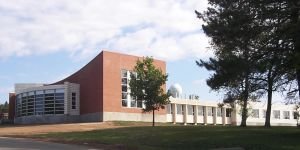Great Lakes Toxicology and Ecology Division Laboratory (GLTED)

88,577 gross square feet (GSF)
Energy Intensity:
FY 2022: 304,770 Btu per GSF
22.1% reduction from FY 2003
Water Intensity:
FY 2022: 3.18 gallons per GSF
70.8% reduction from FY 2007
Duluth, Minnesota
The Office of Research and Development’s Center for Computational Toxicology and Exposure (CCTE) studies the ecological effects of water pollutants on fish, wildlife and ecosystems at this facility because it can use water from Lake Superior to conduct its research. The unchanging quality of the lake’s water is essential to the ecotoxicology research.
Sustainable Features
- GLTED uses more than 99 million gallons of Lake Superior water annually for research and cooling.
- GLTED is undergoing an infrastructure replacement project (IRP) to improve facility electrical and HVAC systems..
- The GLTED laboratory replaced restroom faucets, toilets and urinals with more efficient models, saving an estimated 360,000 gallons of water per year.
- Two acres of meadow grasses and other native plants surrounding GLTED provide a buffer between the site’s impervious surfaces and Lake Superior. As stormwater runs through the meadow, the native landscaping helps filter out pollutants and allow for ground absorption.
- The facility has a Level 2 electric vehicle charging station.
For more information, visit the Great Lakes Toxicology and Ecology Division website or the EPA Facility Contact List.
